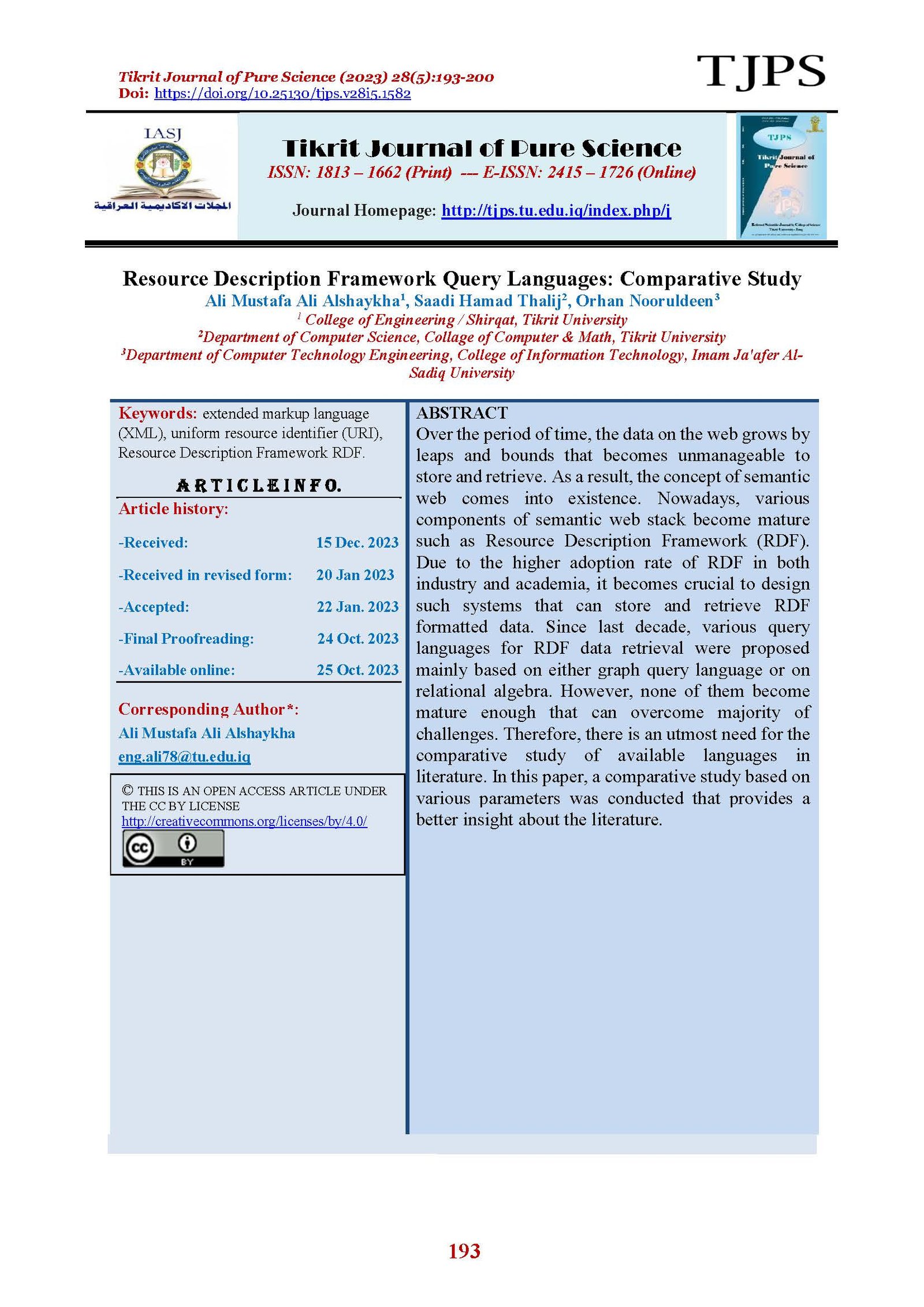Resource Description Framework Query Languages : Comparative Study
Main Article Content
Abstract
Over the period of time, the data on the web grows by leaps and bounds that becomes unmanageable to store and retrieve. As a result, the concept of semantic web comes into existence. Nowadays, various components of semantic web stack become mature such as Resource Description Framework (RDF). Due to the higher adoption rate of RDF in both industry and academia, it becomes crucial to design such systems that can store and retrieve RDF formatted data. Since last decade, various query languages for RDF data retrieval were proposed mainly based on either graph query language or on relational algebra. However, none of them become mature enough that can overcome majority of challenges. Therefore, there is an utmost need for the comparative study of available languages in literature. In this paper, a comparative study based on various parameters was conducted that provides a better insight about the literature.
Article Details

This work is licensed under a Creative Commons Attribution 4.0 International License.
Tikrit Journal of Pure Science is licensed under the Creative Commons Attribution 4.0 International License, which allows users to copy, create extracts, abstracts, and new works from the article, alter and revise the article, and make commercial use of the article (including reuse and/or resale of the article by commercial entities), provided the user gives appropriate credit (with a link to the formal publication through the relevant DOI), provides a link to the license, indicates if changes were made, and the licensor is not represented as endorsing the use made of the work. The authors hold the copyright for their published work on the Tikrit J. Pure Sci. website, while Tikrit J. Pure Sci. is responsible for appreciate citation of their work, which is released under CC-BY-4.0, enabling the unrestricted use, distribution, and reproduction of an article in any medium, provided that the original work is properly cited.
References
[1] Wood, Peter T., (2012). Query languages for graph databases. (ACM) Sigmod Record, 41(1):50–60.
[2] Renzo Angles, Claudio Gutierrez, (2015). RDF Query Languages Need Support for Graph Properties. Whitepaper.
[3] Xin Hu, Depeng Dang, Yingting Yao, Luting Ye, (2018). Natural Language Aggregate Query over RDF Data. Information Sciences, DOI: 10.1016/j.ins.2018.04.042.
[4] Prud,Hommeaux, Eric, and Andy Seaborne(2008). "SPARQL query language for RDF." W3C recommendation 15.
[5] Pérez, J., Arenas, M., & Gutierrez, C. (2008). nSPARQL: A navigational language for RDF. Springer Berlin Heidelberg: pp. 66-81.
[6] Ngonga Ngomo, Axel-Cyrille, et al (2013). Sorry, i don't speak SPARQL: translating SPARQL queries into natural language. Proceedings of the 22nd international conference on World Wide Web. International World Wide Web Conferences Steering Committee: 977-988.
[7] Scheglmann, Stefan, Martin Leinbereger, and Steffen Staab, (2015)."LITEQ: Language Integrated Types, Extensions and Queries for RDF Graphs. ACM 978-1-4503-1871-6/13/01.
[8] Alkhateeb, Faisal, and Jerome Euzenat. (2014) Constrained regular expressions for answering RDF-path queries modulo RDFS. International journal of web information systems: 24-50.
[9] Libkin, Leonid, Juan Reutter, and Domagoj Vrgoč (2013). Trial for RDF: adapting graph query languages for RDF data. Proceedings of the 32nd symposium on Principles of database systems. ACM.
